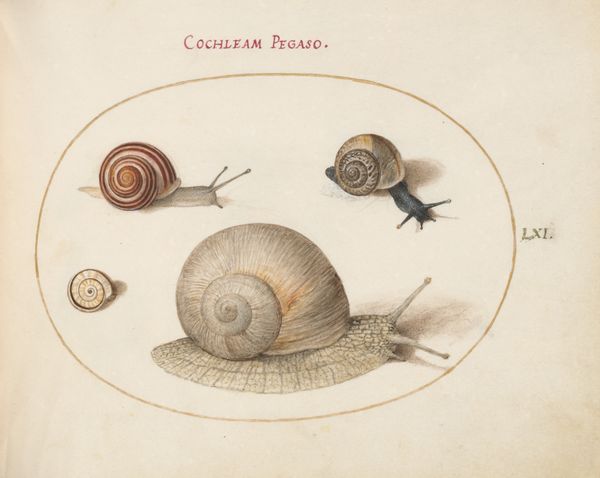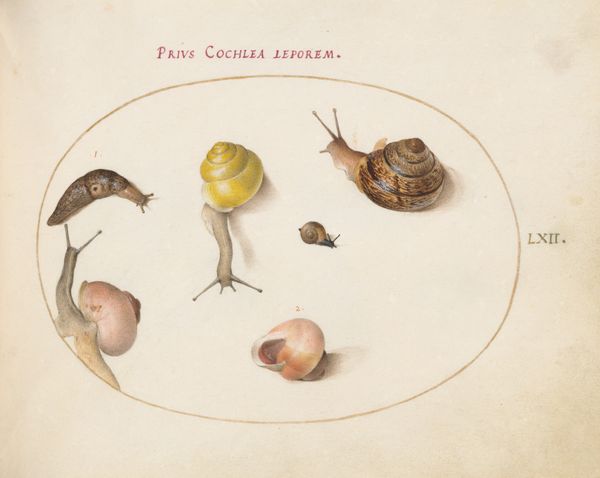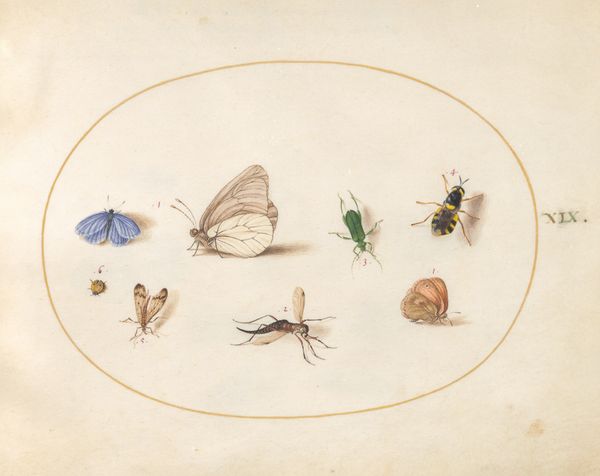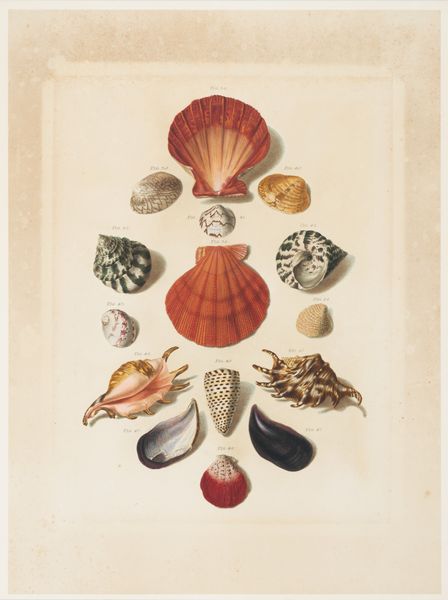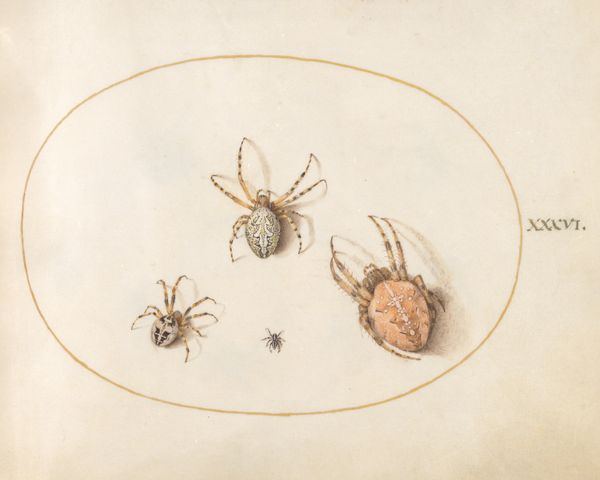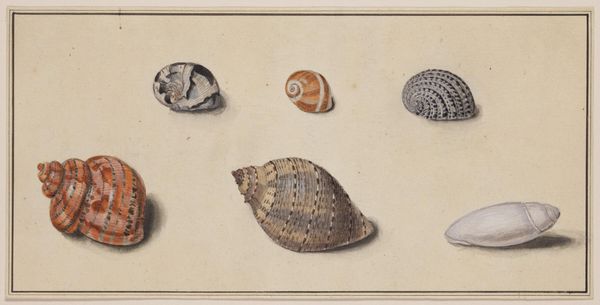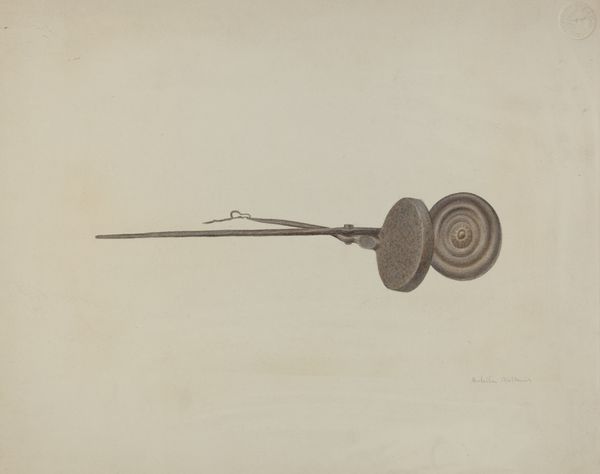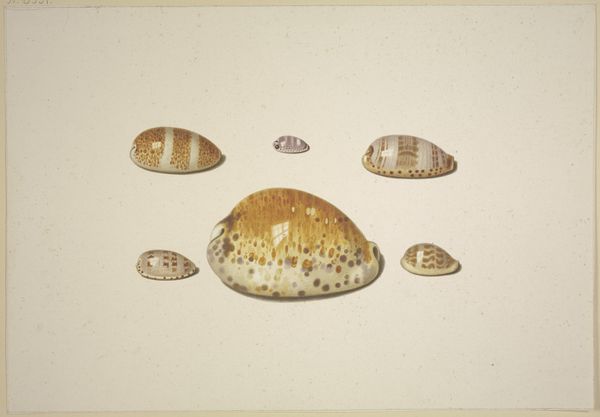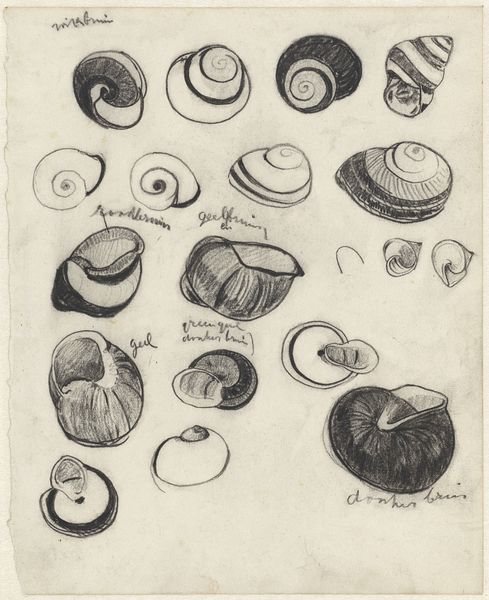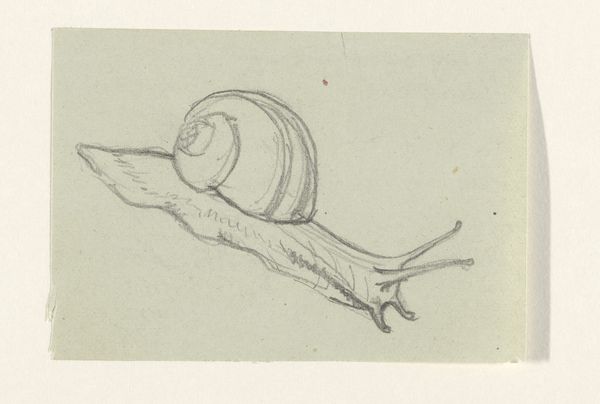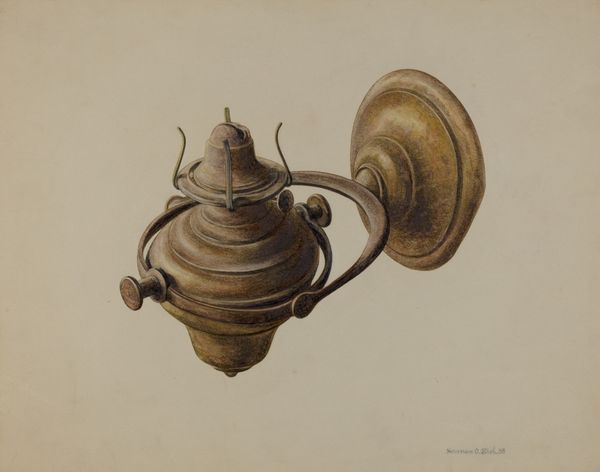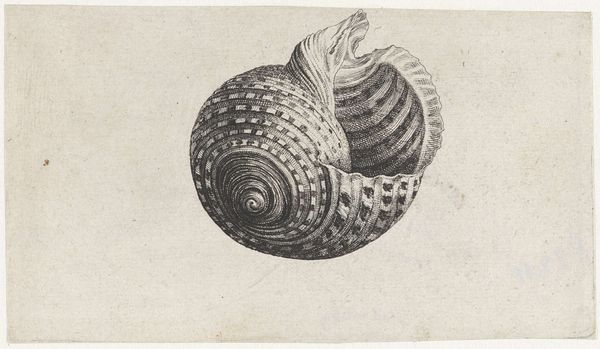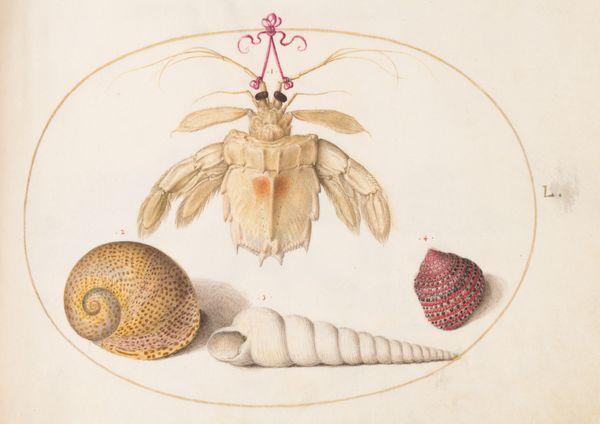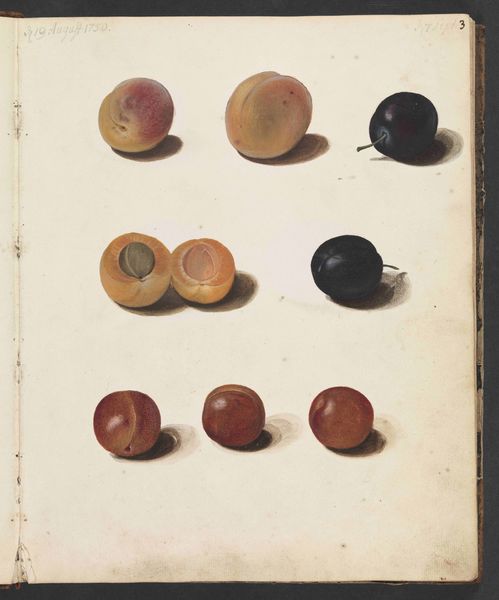
drawing
#
drawing
#
aged paper
#
toned paper
#
light pencil work
#
possibly oil pastel
#
coloured pencil
#
coffee painting
#
underpainting
#
pastel chalk drawing
#
watercolour illustration
#
watercolor
Dimensions: page size (approximate): 14.3 x 18.4 cm (5 5/8 x 7 1/4 in.)
Copyright: National Gallery of Art: CC0 1.0
Editor: Here we have Joris Hoefnagel’s "Plate 63: Seven Snails," created sometime between 1575 and 1580. The meticulous detail gives it a scientific, almost clinical feel, yet there's also something whimsical about it. I'm curious, what do you make of Hoefnagel’s decision to portray snails in such a manner? Curator: It's fascinating, isn't it? Hoefnagel's work exists at the intersection of art, science, and patronage. Think about the late 16th century - a time of burgeoning scientific inquiry fueled by wealthy collectors. These patrons weren't just buying pretty pictures; they were funding knowledge. What do you think the choice of snails says about this relationship? Editor: Perhaps it's a reflection of the curiosity and desire to document the natural world that was gaining prominence at the time? Like a Renaissance version of a nature documentary, meant for the wealthy elite who had cabinets of curiosities. Curator: Precisely! These detailed depictions served as visual records for these collectors. However, it’s not merely objective documentation. The artist carefully arranges the snails within a defined space, like a stage. It brings a sense of order and control. In a way, it mirrored the socio-political landscape where power was often displayed through the ordering and classification of knowledge and possessions. Does seeing it through that lens shift your initial perception of "whimsy?" Editor: Absolutely! It makes me think about the power dynamics inherent in scientific observation and the act of collecting. What seemed like a simple illustration now speaks to broader social and political themes. Curator: And it highlights how art was never truly separate from the institutions and forces that shaped its creation and reception. Editor: That's so insightful. I'll definitely look at early scientific illustrations differently from now on. Thanks for offering that point of view. Curator: My pleasure! Thinking about art as part of a broader historical and social narrative always enriches the experience.
Comments
No comments
Be the first to comment and join the conversation on the ultimate creative platform.
